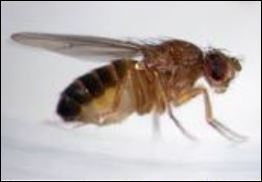Do not Take the Easy Route

You receive a customer complaint for an allergic reaction from one of your products, then another, and then another. It’s time to issue a class one recall notice, but how? During the course of operations all food handling facilities need to test their recall plans. Speaking from experience, many take the shortest, easiest route possible, a unique finished product is no challenge. It was made on a Monday, and it all shipped to the same location on Tuesday. One-hundred percent attainment in less than thirty-minutes. Great work, but was it? Experience has shown many organizations are not prepared for a true recall and cannot properly trace all materials from source to destination.
Typically, recalls are voluntary and initiated by manufacturers and distributors. If FDA or FSIS requests that a product be recalled, the responsibility to act falls on the company which manufactures the product. If a five-thousand pound batch of dough, for example, yields fifteen-thousand frozen, unbaked sub rolls and the batch called for fifty pounds of a premix from a manufacturer and that premix had fifteen pounds of semolina that was recalled by the mill because of a salmonella threat, every ounce of that semolina needs to be accounted for.
When testing a recall plan through a mock recall exercise push your recall team, challenge them, use them. The mock recall should be handled as if were a real life or death situation. The team should be assembled to ensure each truly knows their role. Pictures of labels, shipping & receiving records, batch records, mix logs, bills of lading, invoices, and even pre-operational inspection checklists should be collected and reviewed to support recall decisions. A mock press release should be drafted as regulatory agencies may request one for their use and release. Emergency customer contact phone numbers should be tested and verified as well. As the recall plan matures it should be tested in the most challenging manner. An organization, for example, that delivers directly to retail locations for sales should have a team member go to the store, select a product from the shelves that is nearing shelf life or expiration, select a material from the ingredient statement and start from there to trace and recall.
Bare minimum is never good enough.
Submitted by: Rich Gibson, CHA, ACE
The Merchant Grain Beetle

Order: Coleoptera Family: Silvanidae Genus: Oryzaephilus Species: O. mercator
The Merchant Grain Beetle is a small, brown beetle about 1/8”, has six legs and is small and slender. The beetle can be found throughout the U.S. The larvae of the Merchant Grain Beetle is less than 1/8 inch long; long and narrow with a flattened head. The female may produce up to 285 eggs which are laid within a food source. The total life cycle takes approximately 27–50 days.
The Merchant Grain Beetle is not able to feed off hard stored products, like whole grains, or hard-shelled seeds such as corn. They can be found in these items if the grain has been broken. When infestations are found, the infested materials should be discarded, and the areas vacuumed to remove any adults, larvae or eggs. This is a non-chemical method of control that can break the life cycle.
Fumigation of commodities for significant infestations is possible, but expensive. Space treatments using appropriately labeled insecticides will allow for the control and eradication of exposed insects. The best method for control is through cleaning and crack & Crevice applications of a residual insecticide.
Submitted by: Rich Gibson, CHA, ACE
Snack Foods & The Dark-Eyed Fruit Fly

Comprehensive Food Safety (CFS) was recently contacted by a large-scale commercial snack food producer based in the North East who were concerned with a sudden, unexplained infestation of a small flying insect in their facility. The facility is a packer of bulk died fruits, nuts and varieties of trail mix. The facility was recently constructed, with state-of-the-art processing automation. Operations have been underway for almost a year.
During pre-operational inspections, the Food Safety Manager had started to notice a considerable amount of small flying insects resting on the internal production walls and on the outer stainless-steel surfaces of the packing machinery. Upon discovery, the facility reached out to CFS and RK Environmental Services (RKE) for assistance. The facility has a rigorous sanitation schedule in place which is followed, without fail, and includes the daily breakdown of equipment for deep cleaning and to remove any product accumulations from the line which occurs during normal production.
The first task was to correctly identify the fly. The CFS consultant retrieved a sample of the flying insect which was identified by an RKE staff Entomologist as a Dark-Eyed Fruit Fly. This species of fly is attracted by mold build up versus their cousin the Red-Eyed Fruit Fly that prefers decaying vegetables/food. Usually the Dark-Eyed Fruit Fly becomes a problem if a lot of water is being used and decay/mold sets in behind walls or if grout in the floor has broken down creating mold growth.
The second task was to carry out a detailed inspection of equipment and surrounding structures within the packing room to pinpoint the source of the infestation, if possible. At first glance there were no obvious contributory factors which would explain the dramatic fly activity levels. With assistance from CFS and RKE, packing equipment was broken down during non-production hours by the on-site maintenance team. Only fresh food material spillage was observed behind machine guards and covers with no major build-up of aged food material which could contribute to potential mold growth.
The inspection moved on to the concrete floor slabs. On closer scrutiny, it was observed that the expansion joint grout, and in particular, the sections closest to the area where the fly activity was most prevalent were compromised. The grout had started to come apart and was missing altogether in sections. The joints were exposed to a width of approximately ¾ inch in diameter and 6 inches deep in places. Could this be the cause of the problem? On closer examination and using a long blade spatula, the spatula was inserted down into the exposed joints. When retrieved, the spatula had evidence of aged wet organic material adhered to the blade. It quickly became apparent that fall off from the lines had accumulated deep down into the joints and had built up over time. Fly larvae was also noted in the organic material when scooped out with a long-handled screwdriver. On review of the cleaning SOP, the facility uses a ride on floor scrubber to wash the floor surface throughout the day in the packing room. This was causing wash water ejected from the base of the floor scrubber to seep down into the joints. This created the perfect breeding environment for the Dark-Eyed Fruit Fly. With support from CFS, RKE, the maintenance team and senior management, an expedited corrective action plan was formulated to address the issue.
The corrective action plan comprised:
1. The removal of compromised floor grout.
2. A deep clean out of all exposed joints to remove organic material and soil.
3. An industrial heater blower used to dry out the moisture deep in the joints.
4. A foaming treatment of the joints was conducted.
5. A reputable commercial flooring contractor repaired and re-grouted the joints.
6. RK Environmental Services preformed scheduled space treatments of the production room to achieve an adult fly knockdown using a 1% pyrethrin.
On completion of the above tasks over the course of three four weeks the facility successfully eradicated the Dark-Eyed Fruit Fly activity.
- Key take away:
- The importance of acknowledging an issue and acting quickly.
- Detailed inspections.
- Accurate identification of a pest.
- Involve personnel from various fields of expertise to assist.
- Expedited execution of an agreed action plan.
- Teamwork wins.
Submitted by: Adrian Masterson, Senior Food Safety Consultant, Comprehensive Food Safety
RKE Technical Bulletin – August 2020
Specializing in pest management & food safety consulting for food processing plants
Home » RKE Technical Bulletin – August 2020






